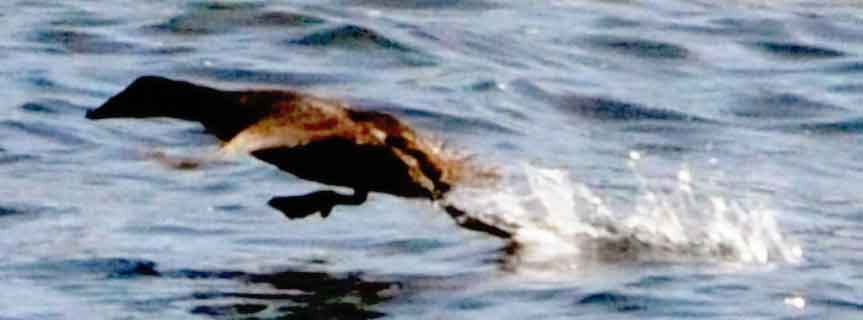
Ducks can fly. Ducks can swim. And, unusually, they’re pretty good at something in between – viz. hydroplaning (a.k.a. ‘Skeetering’). If you’ve seen them doing it, you might have wondered about the physics (and math(s)) behind it. In which case, you are not alone …
“Common eiders (Somateria mollissima) are heavy sea-ducks that spend a large portion of their time swimming at the water surface. Surface swimming generates a bow and hull wave that can constructively interfere and produce wave drag. The speed at which the wavelengths of these waves equal the waterline length of the swimming animal is the hull speed. To increase surface swimming speed beyond the hull speed, an animal must overtake the bow wave. This study found two distinct behaviors that eider ducks used to exceed the hull speed: (1) “steaming,” which involved rapid oaring with the wings to propel the duck along the surface of the water, and (2) “paddle-assisted flying,” during which the ducks lifted their bodies out of the water and used their hind feet to paddle against the surface while flapping their wings in the air.”
A mathematical formula which goes some way in describing the phenomena is proposed by the research team behind the paper : Aquatic Burst Locomotion by Hydroplaning and Paddling in Common Eiders (Somateria mollissima) Journal of Experimental Biology, 218: 1632-1638.
